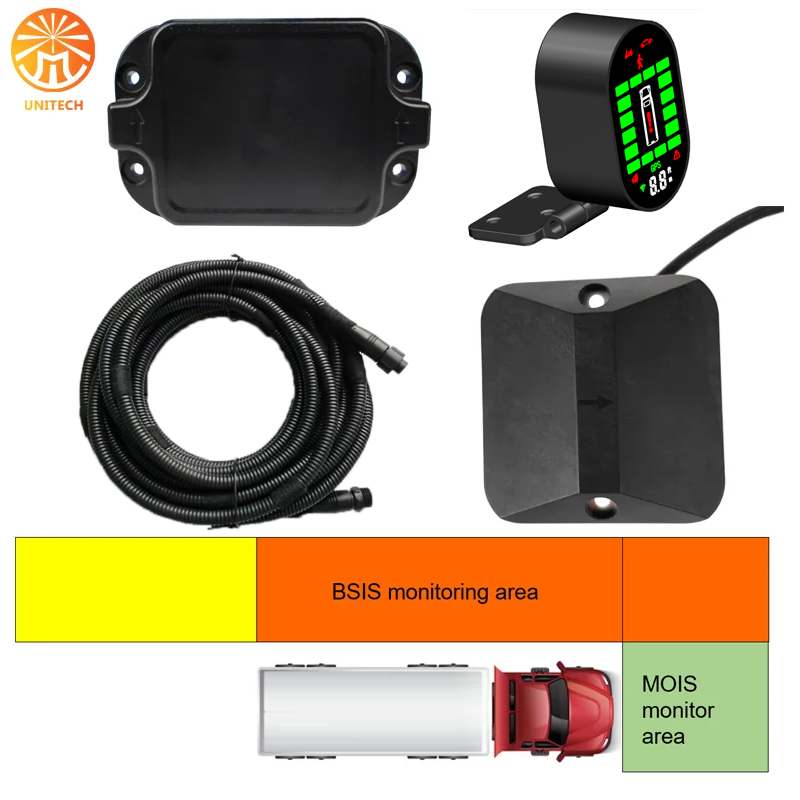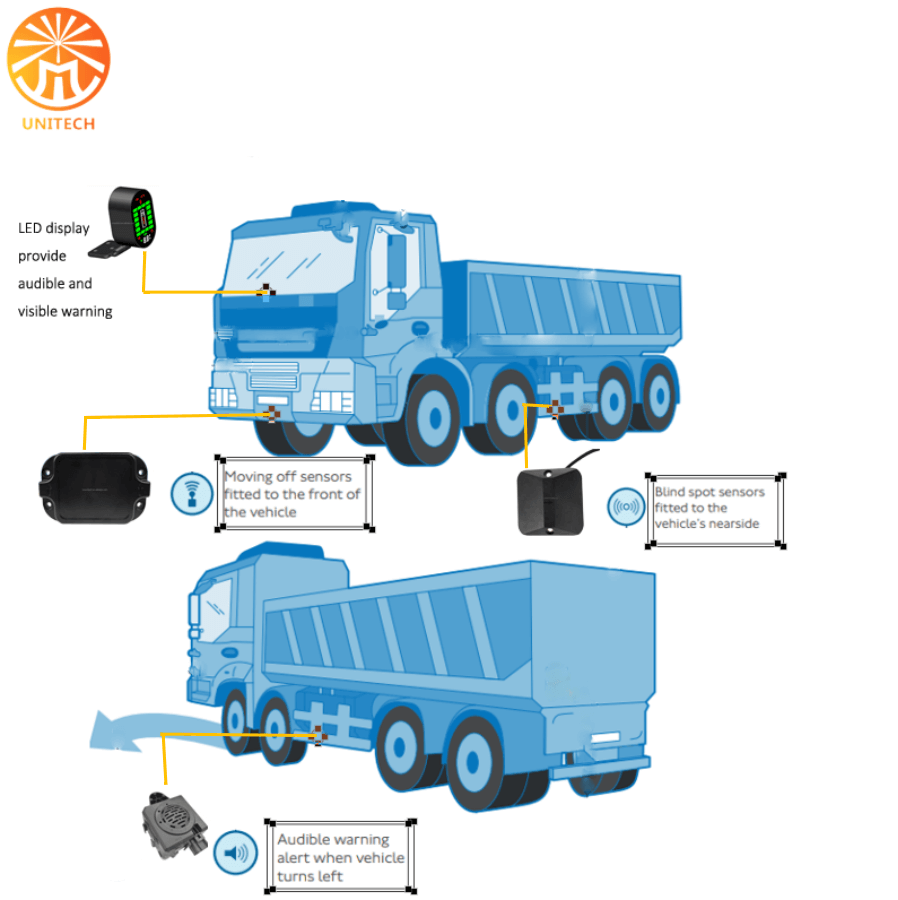The Progressive Safe System (PSS) is a collection of safety equipment designed to improve driver and VRUs awareness of the dangers around them and physical safety barriers. It’s an enhanced version of the current DVS Safe System developed based on DVS24 R151&159. To ensure a minimum standard of a driver’s direct field of view and reduce the risk of close-proximity blind spot collisions, improve the safety of all road users.
From 28 October 2024, heavy goods vehicles over 12 tonnes will need to have a three- star rating or fit the Progressive Safe System to operate in Greater London.

To meet this standard, Unique Technology developed a complete solution to solve this issue by using the latest 77Ghz millimeter wave radar technology to meet the DVS 2024 requirements.

Unique Technology MOIS and BSIS combination Progressive Safe System to help fleet owners and operators with DVS 2024.
From enforcement commencement, the minimum DVS rating will be one star to enter or operate in Greater London and this will then increase to a minimum of three stars in 2024.
If your vehicle does not meet the minimum DVS star rating, you will need to meet the ‘Safe System’ requirements to be granted a permit.
a. Blind Spot Information System (BSIS)
With two radar built-in, provide full 180° coverage of the vehicle’s side blind spots. Which effectively detects obstacles within the entire blind spot area.
b. Moving Off Information System (MOIS)
Use a microwave radar to detect obstacles in front of the vehicle. During startup or low-speed driving, the system provides warnings for potential collision hazards (such as bicycles or motorcycles in front of the vehicle at traffic lights, or pedestrians or bicycles/motorcycles crossing pedestrian crossings).
c. An audible vehicle manoeuvring warning (left turn or right turns if the vehicle is left-hand drive))
To warn road users of intended manoeuvres.

The system use 77GHz microwave radar for obstacle detection, offering the following advantages:
a. It has the ability to detect the relative speed, orientation and distance of obstacles, and can accurately locate the position of obstacles, combined with the relative speed of obstacles. It can accurately evaluate the danger level of obstacles and provide appropriate alarm methods (information signal or warning signal).
b. Easy installation.
c. Long detection range: over 50 meters for vehicle detection and over 30 meters for bicycles, with minimal susceptibility to adverse conditions such as rain and changes in external lighting.


